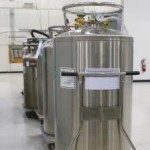Cryogenic Fracturing? What a Cool Idea!

Robert Menard
Certified Purchasing Professional,
Certified Professional Purchasing Consultant, Certified Green Purchasing Professional, Certified Professional Purchasing Manager
Editor’s Note: the source data for this blog post first appeared in Oilpro , an oil & gas industry voice of advocacy. A Houston Chronicle story about research at the Colorado School of Mines was also consulted. The accompanying commentary elaborates on the story.
Hydraulic fracturing is the most popular technique used today to extract petroleum from underground rock formations, particularly oil shale. So-called “environmentalists” have raised claims about the large volumes of water diverted from domestic consumption, especially during the protracted drought in Texas, the largest production state in the U.S. This water based fracking fluid becomes contaminated with one time use and thus disposal is an environmental challenge. Both the diversion and disposal claims are not frivolous. Indeed, the recycling of fracking water is growing as a “green” alternative. Water depletion and disposal due to fracking is cited as primary reasons form more than 400 ballot measures nationwide in the November 2014 elections seeking to limit or reduce fracking. Since any restriction is likely to induce a ferocious backlash as mineral rights owners or controllers sue to regain their rights, the free markets are always on the lookout for solutions.
The free market always finds solutions
Recycling of fracking water is a great idea but others are emerging. One of these solutions is found in cryogenics. The Oil & Gas industry has dabbled in alternative fracking technologies, particularly cryogenics, since the 1970s. Liquid nitrogen or carbon dioxide (liquid propane and other fluids have also been used) is created by cooling to very low temperatures (below minus 300 degrees F). Instead of water, these super cooled fluids are injected into the wells at high pressure.
 When the fracking fluid contacts the relatively warm shale, it cracks open the pressurized shale (millions of tons of overburden). To envision this fracking process, imagine boiling water being poured onto frozen glass. The glass cracks into pieces. The same happens to the shale. The cracks and fissures liberate the hydrocarbon substances.
When the fracking fluid contacts the relatively warm shale, it cracks open the pressurized shale (millions of tons of overburden). To envision this fracking process, imagine boiling water being poured onto frozen glass. The glass cracks into pieces. The same happens to the shale. The cracks and fissures liberate the hydrocarbon substances.
Advantages
- Unlike hydraulic fracking, the cryogenic fluid need not be recovered, cleansed, disposed or recycled. The liquid nitrogen evaporates underground. It will take some live testing to determine is the evaporated nitrogen is as benign to the terrain as it appears so far.
- This cryogenic fracking techniques seems to create larger fissures, which makes it easier and more efficient to extract the hydrocarbon harvest.
- On the more technical front, this process may solve problems with water-sensitive formations or those with an unwanted amount of clay. Hydraulic fracking can cause water saturation around the fracture and clay swelling (clay is one of the few soils that expand with water), which makes extraction more difficult and expensive.
Disadvantages
- Critics claim nitrogen does not have sufficient viscosity to carry proppant efficiently
- The fluid cost be too expensive for producers but this disadvamtage may be offset or eliminated by the ease and efficiency of the larger fissures
- Special piping and equipment requirements add cost and availability problems, at least initially
The choice is clear – try cryogenic fracturing.